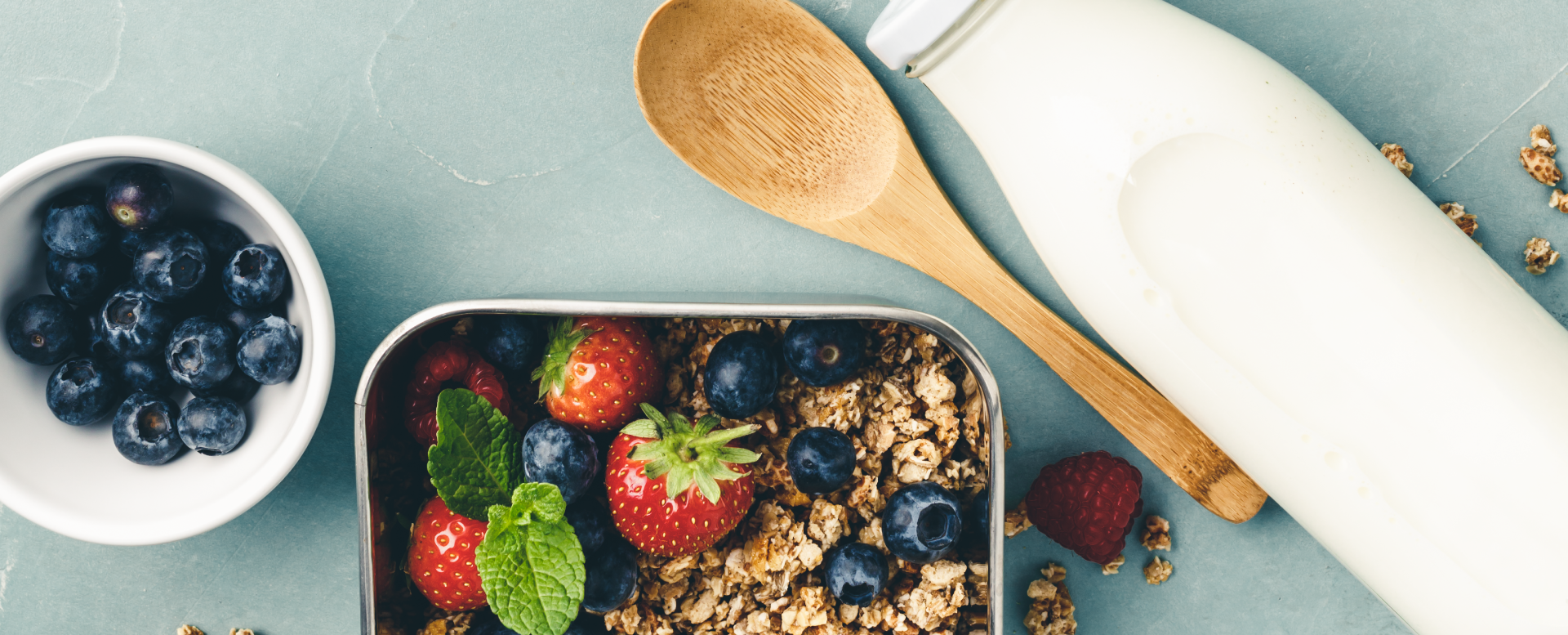It can be hard to keep up with staying both healthy and conscious of what’s best for the world around us. What are all the things we need to include in our routines, and, more importantly, what are all those things we need to NOT have in our lives. “BPA free” is one of those seemingly buzzed words that makes its way onto labels and out of mouths a lot. Is it a real concern if BPA is in our products? What even is it, and why should we pay attention to it? Let’s break down the business of BPA.
WHAT IS BPA?
BPA is short for bisphenol A. It’s an organic synthetic compound. It’s a colorless solid. The reason it’s commonly talked about is because it is in plastics - a lot of plastics in consumer goods. It’s used in certain polycarbonates, epoxy resins, polysulfones and more.
Real life examples of those include plastic bottles, water bottles, food storage containers, toothbrushes, sports equipment, protective eyewear, DVDs, and baby bottles. BPA-based plastic is tough and clear, which is why it was adopted into so many of these everyday things people use and reuse often. Popular, indeed.
In 2003, U.S. consumption was 856,000 tons - most of that was in polycarbonate plastics. Production continued to increase globally. In 2015, an estimated 4 million tonnes of BPA-derived chemical were produced, making it one of the highest volume of chemicals produced worldwide at the time.

SOUNDS COMMON. SO, WHAT’S THE PROBLEM WITH BPA?
There are a few reasons you should be cautious and aware of the amounts of BPA in your life. According to the Mayo Clinic, some research has shown that BPA can seep into food or beverages from containers that are made with BPA. It’s a concern because there are some health effects on the body - specifically the brain and prostate gland of fetuses, infants and children. You read that right. BPA can affect babies and children (and even fish in our oceans and lakes).
BPA is a xenoestrogen, and has estrogen-mimicking and hormone-like properties. Because BPA mimics hormones and disrupts the endocrine systems, it can lead to reproductive issues, in addition to immunity and neurological issues.
Frequent exposure to BPA can also result in an increased susceptibility to Alzheimer’s, childhood asthma, high blood pressure, metabolic disease, type 2 diabetes, and cardiovascular disease. Not really something you bargained for when you purchase a simple product you may use everyday, right?
WHAT CAN I DO TO HAVE LESS EXPOSURE TO BPA?
You can take ownership of your health when it comes to how much BPA exposure you and your household get.
1) Look for BPA-free itemsThankfully, there are BPA-free products out there. RADIUS products are BPA free. You won’t find BPA in RADIUS products - zero, zip, ziltch! If a product is BPA free, it’s usually marked and marketed that it’s BPA-free, but if you aren’t sure you can look at the recycle codes on the packaging. You know - those triangle-shaped arrows with numbers on it - they can tell you a lot about the chemicals that went into making that product. Try to stay away from those with a 3 or 7 - those might contain BPA.
2) Shop BPA-free brands
Because BPA has been under the microscope (literally!) globally, many manufacturers have stopped using it. Shop companies who are intentional about being BPA free. At RADIUS, it’s not an accident - it’s a mission. Getting in the habit of shopping these eco-conscious brands makes it a no-brainer and comforting to shop knowing you are not buying harmful chemicals for you and for the planet.

Since one of the most common places you find BPA is in food containers, it’s a fairly simple swap to use less of it. Instead of the plastic container, use glass, stainless steel or porcelain. Remember we mentioned BPA is also in epoxy form? Well, many canned foods are lined with BPA-based epoxy. Can the cans. Swap out your canned goods for fresh or frozen options.
Heat causes the chemicals in BPA-based plastics to break down and, thus, being more dangerous to us. To help avoid BPA exposure, avoid putting plastics in the dishwasher or the microwave.
HOW CAN WE ALL TAKE STEPS TO REDUCE BPA?
One of the issues surrounding BPA production is what happens to the chemicals once we’ve thrown them out. Post-consumer BPA waste comes from municipal wastewater treatment plants, irrigation pipes used in agriculture, ocean-borne plastic trash, leaching from plastic, paper, and metal waste in landfills. Not surprisingly, BPA can be extremely toxic for aquatic wildlife since it builds up in reservoirs when it’s added to landfills.
The good news is that companies are focusing on NOT using BPA. Consumers make a difference in buying BPA-free products, and eco-friendly brands make a difference by skipping BPA all together. It all matters.
RADIUS takes this very seriously. With high standards for materials, you won’t find nasty additives or toxic chemicals in RADIUS toothbrushes or toothpaste. The RADIUS plastics journey is about taking pride in using bioplastics and renewable materials.
Wondering what type of materials are used, since BPA isn’t one of them? Well, the bioplastics RADIUS uses culls resin from renewable biomass sources such as vegetable oils, timber, hemp, coconut, wood, and paper - even dollar bills!
It’s a work in progress. A major, culture-shifting, planet-saving work in progress. Shifting fully to bioplastics in all products doesn’t happen overnight, but RADIUS is working to get there.
RADIUS is leading the charge to make this change, ahead of being regulated to do so. The need for change is what warrants it, not necessarily the mandate or law requiring it. Sometimes you do the right thing because it’s the right thing.

Different parts of the world (and different states within countries) have different regulations on the use of BPA in plastics. BPA has been highly studied and scrutinized by many governments since about 2008. France has banned BPA in food packaging. After hundreds of studies, the United States Food and Drug Administration says BPA is safe at the low levels in some foods. But, California lists BPA as being toxic to the female reproductive tract under its Proposition 65 rule that requires manufacturers to warn consumers if certain chemicals are in their products. The European Chemicals Agency said that BPA should be listed as a substance of high concern in 2017 - based on the toxicity for human reproduction. That means the European Union could be taking steps to restrict the use of BPA. They, along with Canada, have banned BPA in baby bottles for safety reasons. You can’t make baby bottles, sippy cups or canned infant formula with BPA in the US either as of 2010.
You can impact your exposure to BPA plastics. Stop buying it, swap it out, keep it out of landfills - all simple adjustments that make a big difference.
Start now with a BPA-free toothbrush.
Happy teeth, happy planet.

